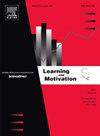Cues paired with alternative reinforcement mitigate resurgence in humans
IF 1.8
4区 心理学
Q3 PSYCHOLOGY, BIOLOGICAL
引用次数: 0
Abstract
Resurgence is the return of a previously reinforced and extinguished operant response with the worsening of more recent conditions, including extinction of a more recently reinforced alternative response. Given the relevance of resurgence to relapse of clinically relevant behavior, this preclinical experiment evaluated a method for mitigating resurgence by arranging a cue paired with alternative reinforcement in adult humans. After reinforcing target button pressing with points during Phase 1, Phase 2 arranged extinction of target responding and reinforced alternative responding with point delivery and a paired cue. Phase 3 provided a within-subject evaluation of the presence and absence of the cue between two groups either with continued or removed alternative reinforcement. Target responding was greater during Phase 3 in the absence (i.e., resurgence) than presence of alternative reinforcement. Continued presentation of the cue decreased target responding with the removal but not when continuing alternative reinforcement. Alternative response rates did not differ, however, depending on the presence or absence of cues, which is inconsistent with interpretations based on conditioned reinforcement and generalization. These findings are consistent with previous studies with rats, pigeons, and children, though moderate effect sizes suggest future research is needed to identify variables that could enhance the effectiveness of such cues to mitigate resurgence clinically.
与替代强化配对的线索减轻了人类的复苏
复活是指随着近期条件的恶化,先前被强化和被消灭的操作性反应的回归,包括最近被强化的替代反应的消失。鉴于死灰复燃与临床相关行为复发的相关性,本临床前实验评估了一种通过在成人中安排提示和替代强化来减轻死灰复燃的方法。在第一阶段用点强化按下目标按钮后,第二阶段用点传递和配对提示强化目标反应消退和备选反应。第三阶段在两组之间对提示的存在和缺失进行了受试者内部评估,这两组有持续的或移除的替代强化。在第三阶段,在没有(即复苏)替代强化的情况下,靶反应比存在替代强化的情况下更大。提示的持续呈现会降低目标在移除时的反应,但在继续替代强化时则不会。然而,根据提示的存在与否,替代反应率没有差异,这与基于条件强化和泛化的解释不一致。这些发现与先前对大鼠、鸽子和儿童的研究一致,尽管适度的效应大小表明未来的研究需要确定变量,以提高这些线索的有效性,以减轻临床复发。
本文章由计算机程序翻译,如有差异,请以英文原文为准。
求助全文
约1分钟内获得全文
求助全文
来源期刊

Learning and Motivation
Multiple-
CiteScore
2.90
自引率
0.00%
发文量
53
期刊介绍:
Learning and Motivation features original experimental research devoted to the analysis of basic phenomena and mechanisms of learning, memory, and motivation. These studies, involving either animal or human subjects, examine behavioral, biological, and evolutionary influences on the learning and motivation processes, and often report on an integrated series of experiments that advance knowledge in this field. Theoretical papers and shorter reports are also considered.
 求助内容:
求助内容: 应助结果提醒方式:
应助结果提醒方式:


